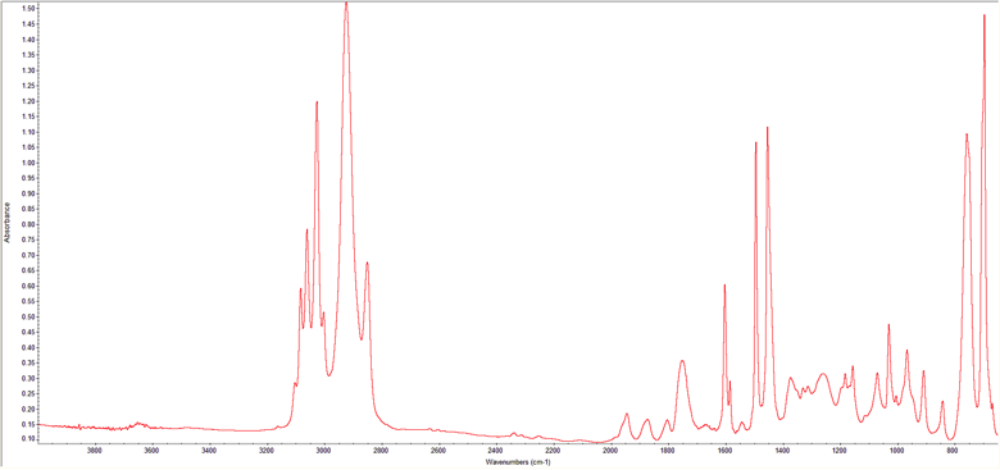Infrared Microspectroscopy
Infrared microspectroscopy is the union of microscopy and infrared spectroscopy for microanalysis. Microscopy provides essential information about a sample, as detailed in the sections above on stereo microscopy and polarized light microscopy. Infrared microspectroscopy allows for the collection of infrared spectra on individual particles or areas within a larger sample. Infrared microspectroscopy provides chemical information about the sample. When the two techniques are combined, powerful conclusions can be drawn. For example, crystals with different morphologies can be identified by optical microscopy and then tested with infrared microspectroscopy to determine if the different crystals are polymorphs or different chemical compounds. When contaminants (unknown particulates) are found in a sample, optical microscopy can be used to isolate and prepare the particle for further characterization, and infrared microspectroscopy can be used to conclusively identify the contaminant. Another application of infrared microspectroscopy is the characterization of any material available only in extremely limited amounts. Only a single particle is required for infrared microspectroscopy.
Improved Pharma offers a variety of sample techniques such as transmission, absorption-reflection-absorption, attenuated total reflection (ATR), and specular reflection. Samples may be prepared as a potassium bromide (KBr) pellet, directly analyzed in a compression cell or diamond anvil, mulled with Nujol or other appropriate liquid, or prepared as a thin film. Different samples will be more amenable to different sampling techniques, and Improved Pharma can select the most appropriate technique. Improved Pharma’s infrared microspectroscopy instruments include:
- Smith Detection IlluminatIR 1.5
- Smith Detection IlluminatIR 2.0

